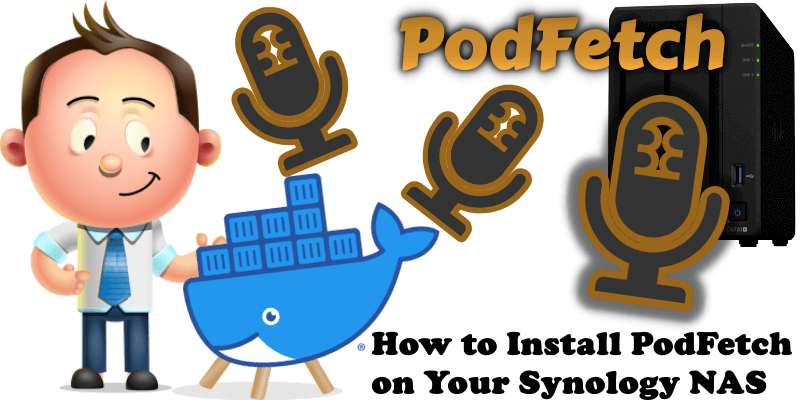
PodFetch is a self-hosted podcast manager. It is a web app that lets you download podcasts and listen to them online. It is written in Rust and uses React for the frontend. It also contains a GPodder integration so you can continue using your current podcast app. In this step by step guide I will show you how to install PodFetch on your Synology NAS using Docker & Portainer.
STEP 1
Please Support My work by Making a Donation.
STEP 2
Install Portainer using my step by step guide. If you already have Portainer installed on your Synology NAS, skip this STEP. Attention: Make sure you have installed the latest Portainer version.
STEP 3
Go to File Station and open the docker folder. Inside the docker folder, create one new folder and name it podfetch. Follow the instructions in the image below.
Note: Be careful to enter only lowercase, not uppercase letters.
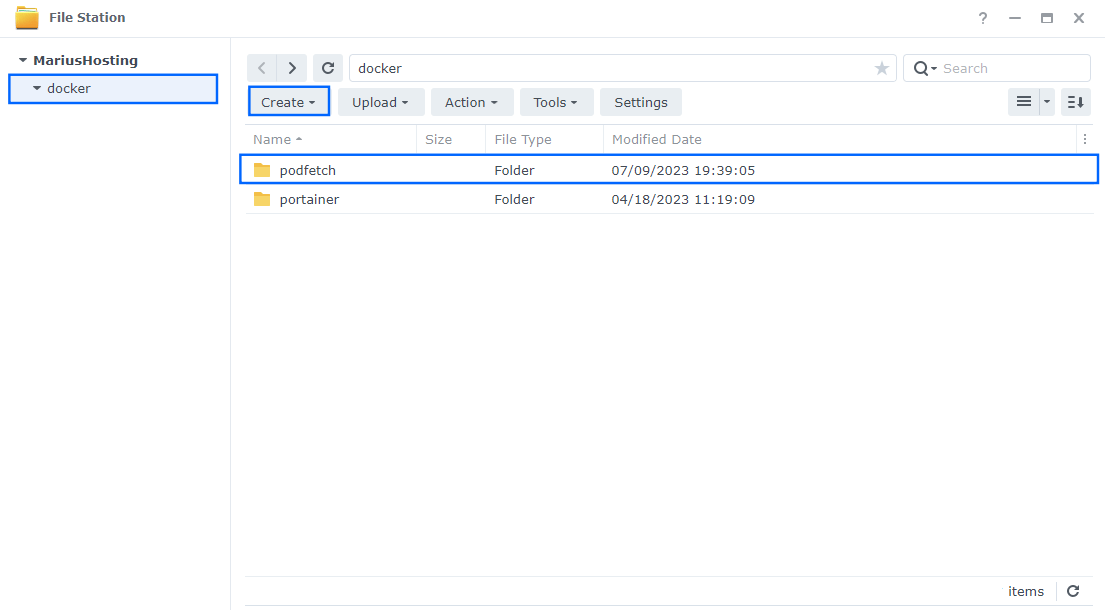
STEP 4
Now create two new folders inside the podfetch folder that you created at STEP 3 and them db and podcasts. Follow the instructions in the image below.
Note: Be careful to enter only lowercase, not uppercase letters.
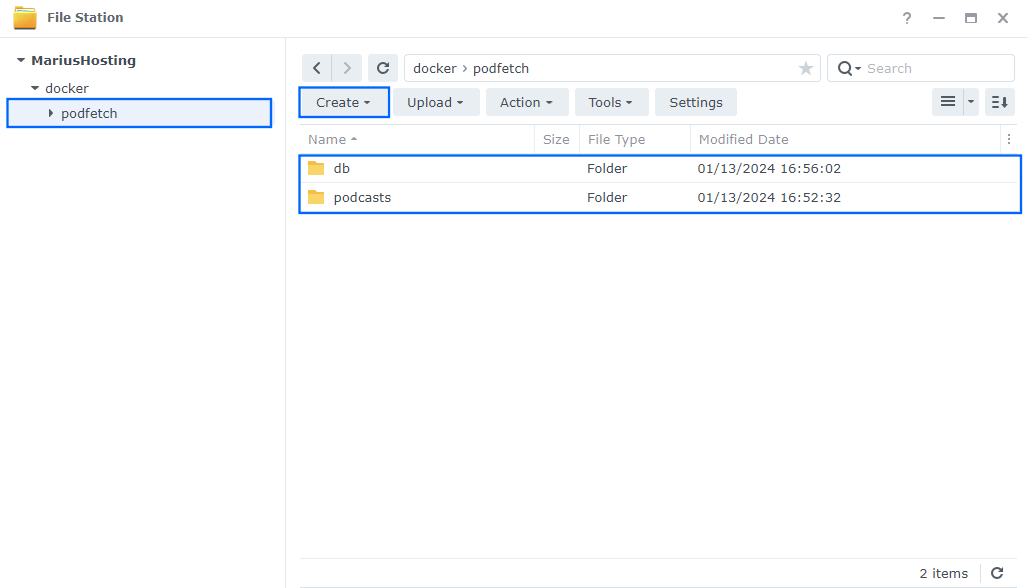
STEP 5
Log into Portainer using your username and password. On the left sidebar in Portainer, click on Stacks then + Add stack. Follow the instructions in the image below.

STEP 6
In the Name field type in podfetch. Follow the instructions in the image below.
version: '3.9'
services:
podfetch:
image: samuel19982/podfetch:latest
container_name: PodFetch
user: 1026:100
ports:
- 4135:8000
volumes:
- /volume1/docker/podfetch/podcasts:/app/podcasts:rw
environment:
- POLLING_INTERVAL=300
- SERVER_URL=http://localhost:80
- DATABASE_URL=postgresql://postgres:changeme@postgres/podfetch
- GPODDER_INTEGRATION_ENABLED=true
- BASIC_AUTH=true
- USERNAME=marius
- PASSWORD=mariushosting
restart: on-failure:5
postgres:
image: postgres:16
container_name: PodFetch-DB
security_opt:
- no-new-privileges:true
healthcheck:
test: ["CMD", "pg_isready", "-q", "-d", "podfetch", "-U", "postgres"]
environment:
POSTGRES_USER: postgres
POSTGRES_PASSWORD: changeme
POSTGRES_DB: podfetch
volumes:
- /volume1/docker/podfetch/db:/var/lib/postgresql/data:rw
restart: on-failure:5
Note: Before you paste the code above in the Web editor area below, change the value numbers for user with your own UID and GID values. (Follow my step by step guide on how to do this.) 1026 is my personal UID value and 100 is my personal GID value. You have to type in your own values.
Note: Before you paste the code above in the Web editor area below, change the value for USERNAME. Type in your own username. marius is an example for a username. You will need this username later at STEP 10.
Note: Before you paste the code above in the Web editor area below, change the value for PASSWORD. Type in your own password. mariushosting is an example for a password. You will need this password later at STEP 10.
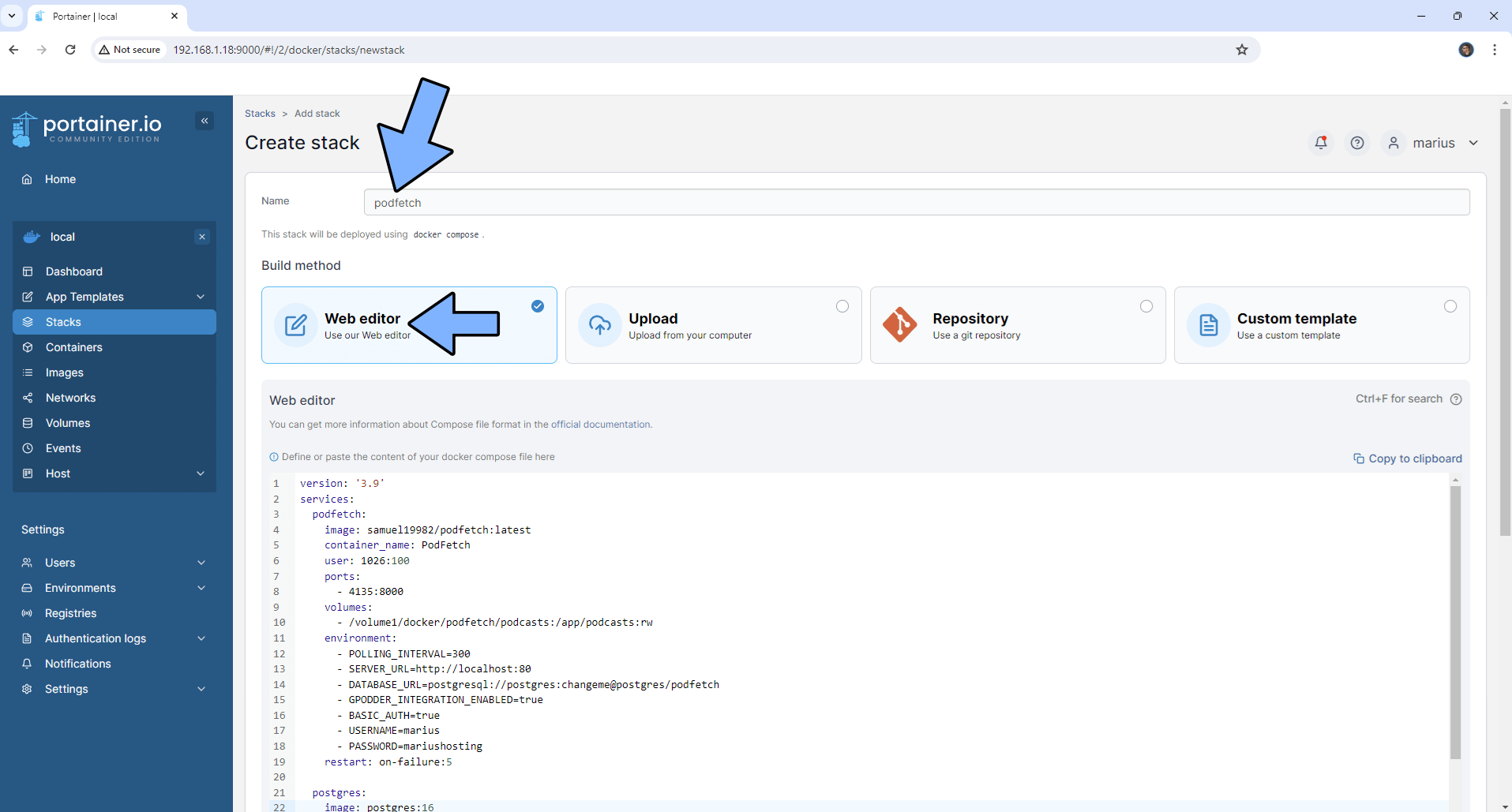
STEP 7
Scroll down the page until you see a button called Deploy the stack. Click on it. Follow the instructions in the image below. The installation process can take up to a few minutes. It will depend on your Internet speed connection.
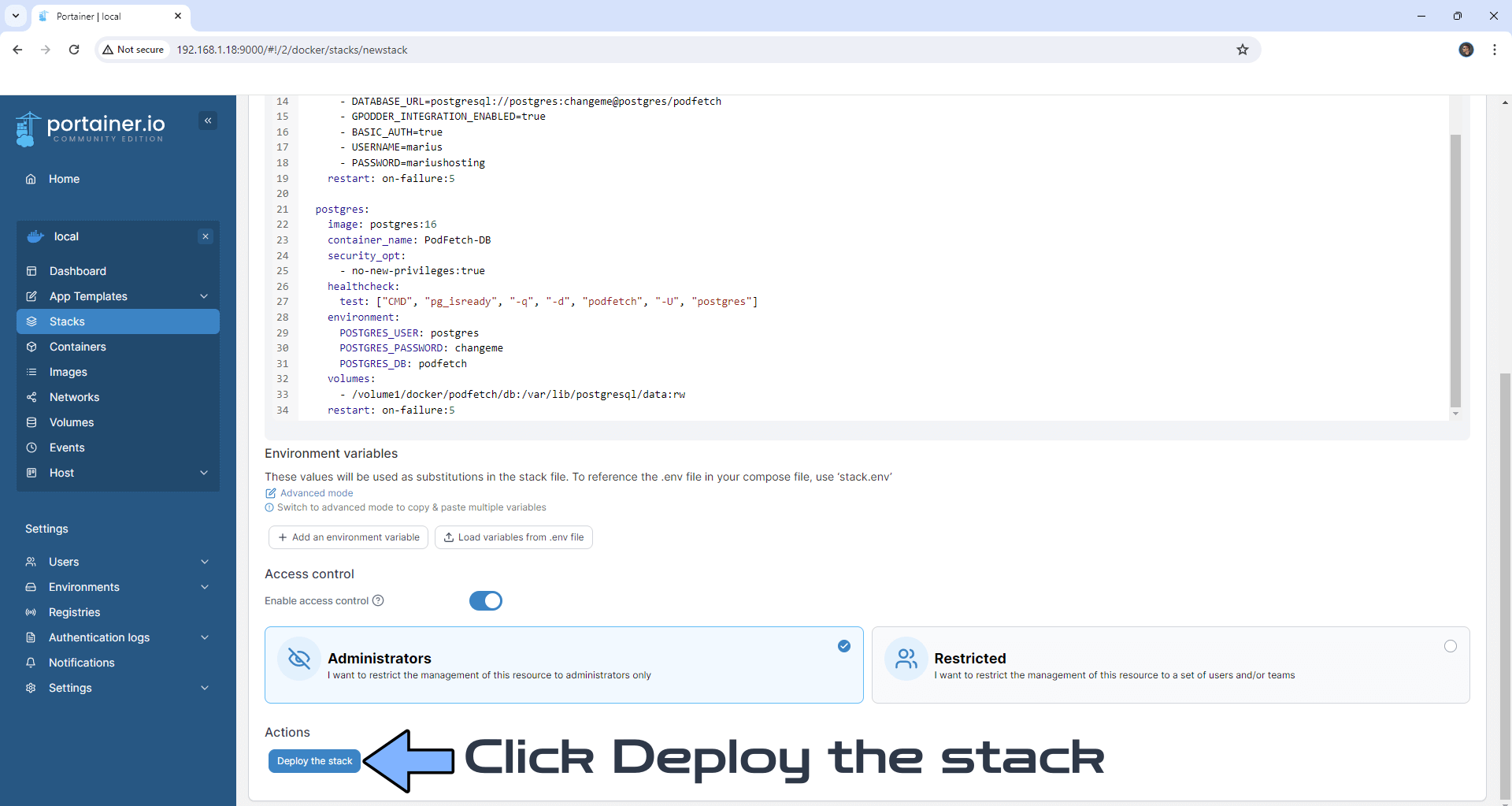
STEP 8
If everything goes right, you will see this message at the top right of your screen: “Success Stack successfully deployed“.
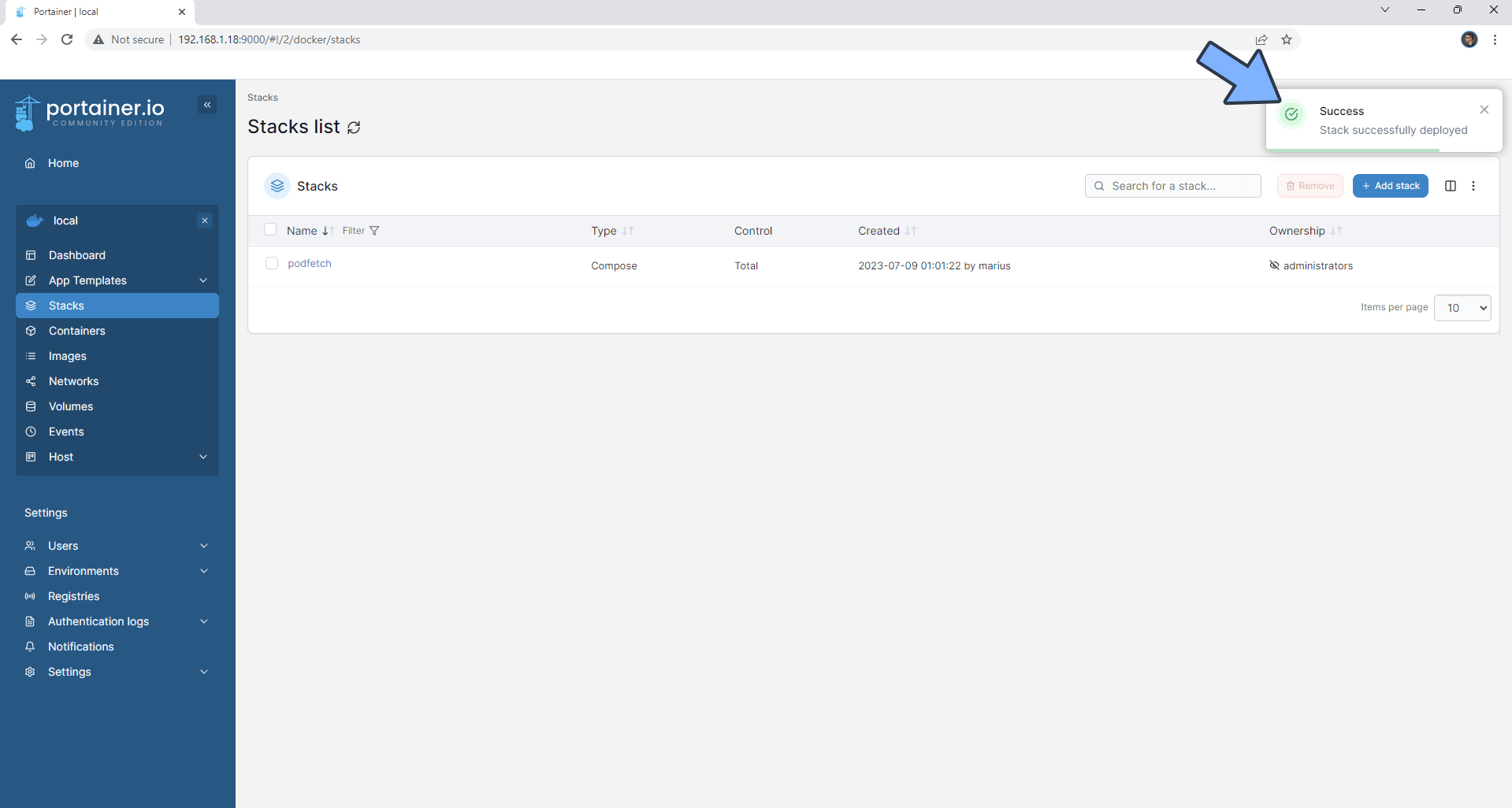
STEP 9
🟢Please Support My work by Making a Donation. Almost 99,9% of the people that install something using my guides forget to support my work, or just ignore STEP 1. I’ve been very honest about this aspect of my work since the beginning: I don’t run any ADS, I don’t require subscriptions, paid or otherwise, I don’t collect IPs, emails, and I don’t have any referral links from Amazon or other merchants. I also don’t have any POP-UPs or COOKIES. I have repeatedly been told over the years how much I have contributed to the community. It’s something I love doing and have been honest about my passion since the beginning. But I also Need The Community to Support me Back to be able to continue doing this work.
STEP 10
The installation process can take up to a few seconds/minutes. It will depend on your Internet speed connection. Now open your browser and type in http://Synology-ip-address:4135 Type in your own USERNAME and PASSWORD that you have previously added at STEP 6. Click Sign in. Follow the instructions in the image below.
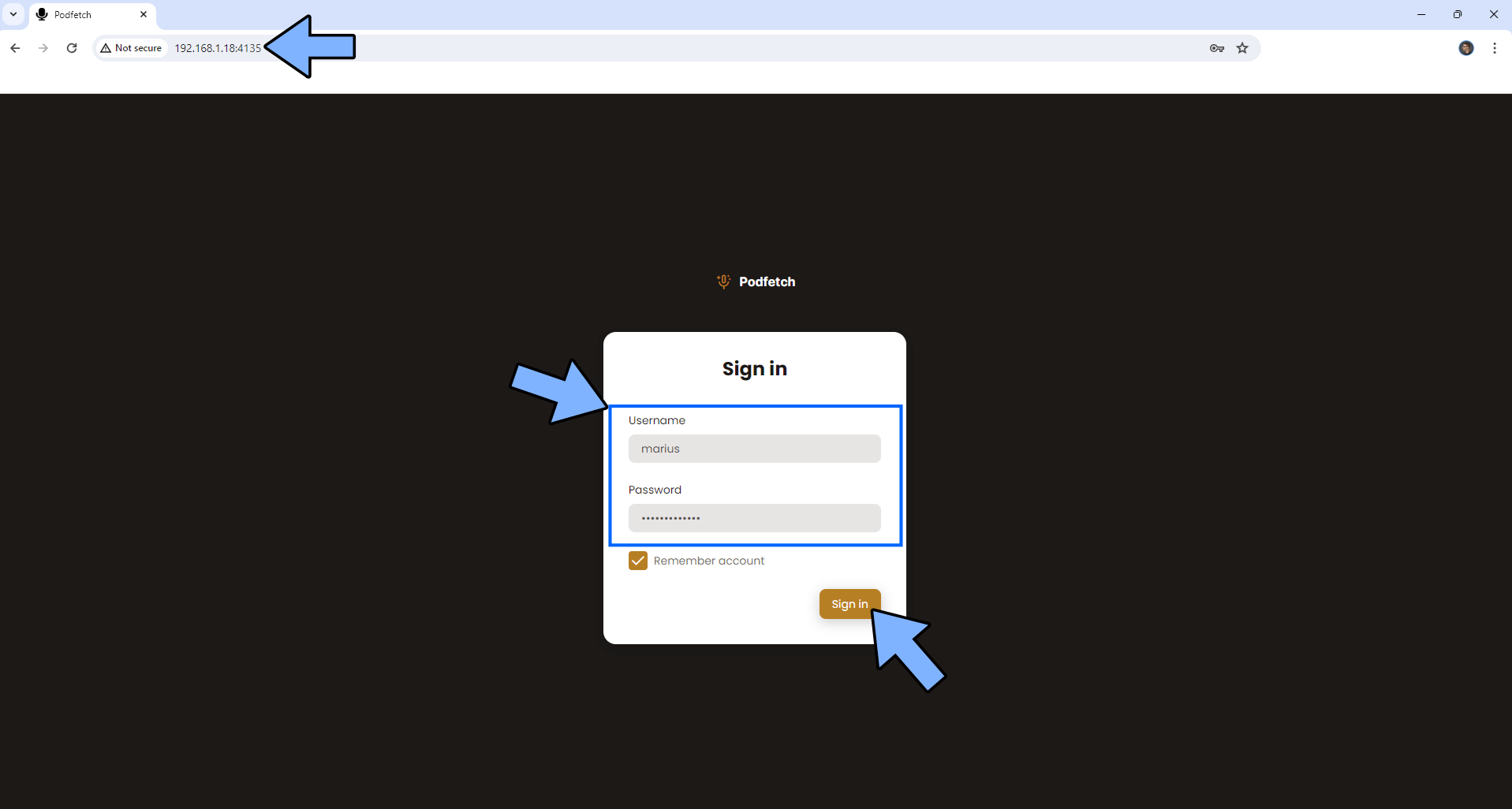
STEP 11
On the left sidebar click All Subscriptions then +Add new. Follow the instructions in the image below.
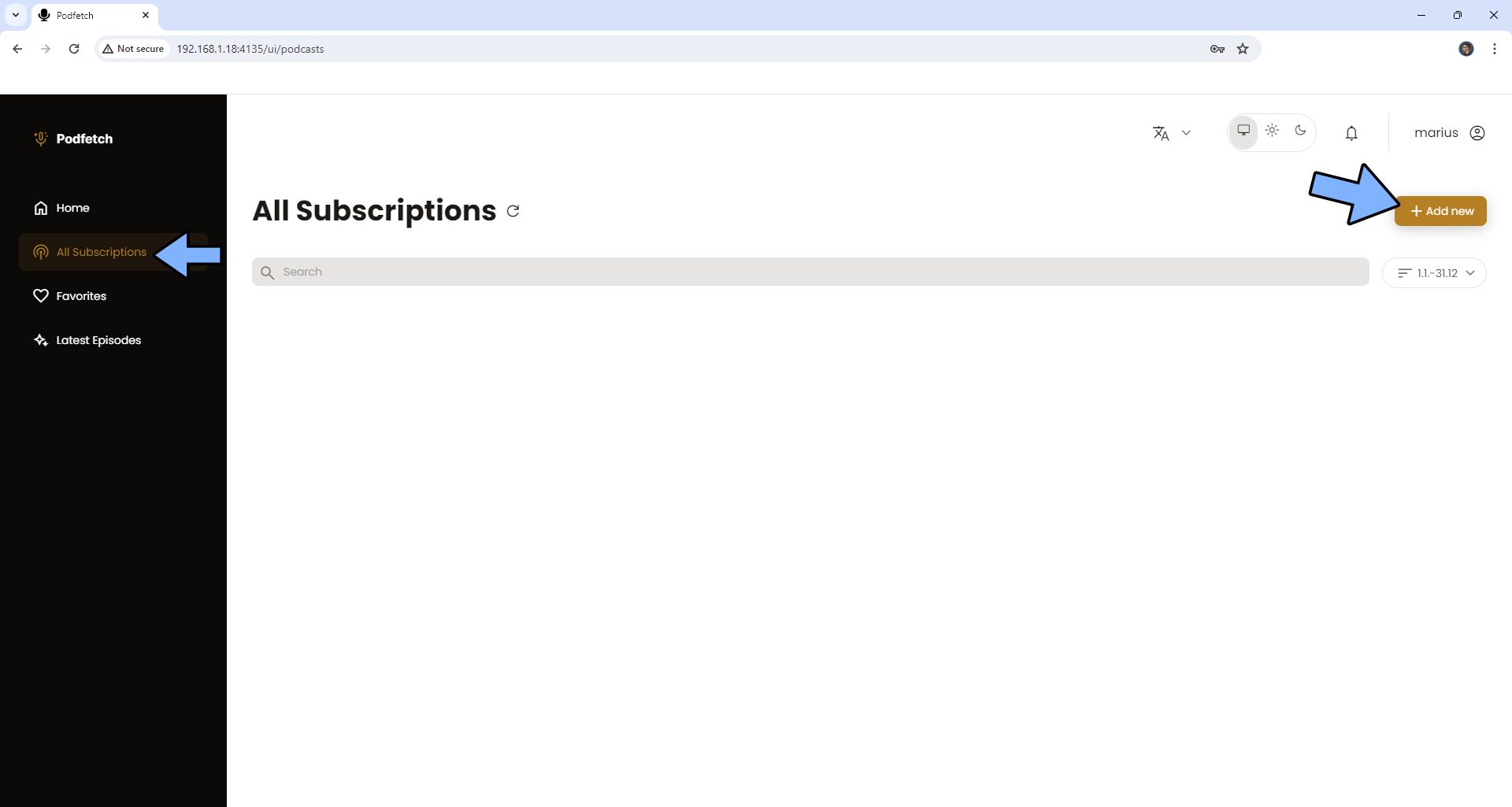
STEP 12
After you click the +Add new button at STEP 11, a new pop up window will open. Add your favorite Podcast from iTunes, OPML file or using the RSS feed URL. I chose my favorite podcast (Mac Geek Gab Podcast) at this RSS feed. Click Add and, after that, close the pop up window.
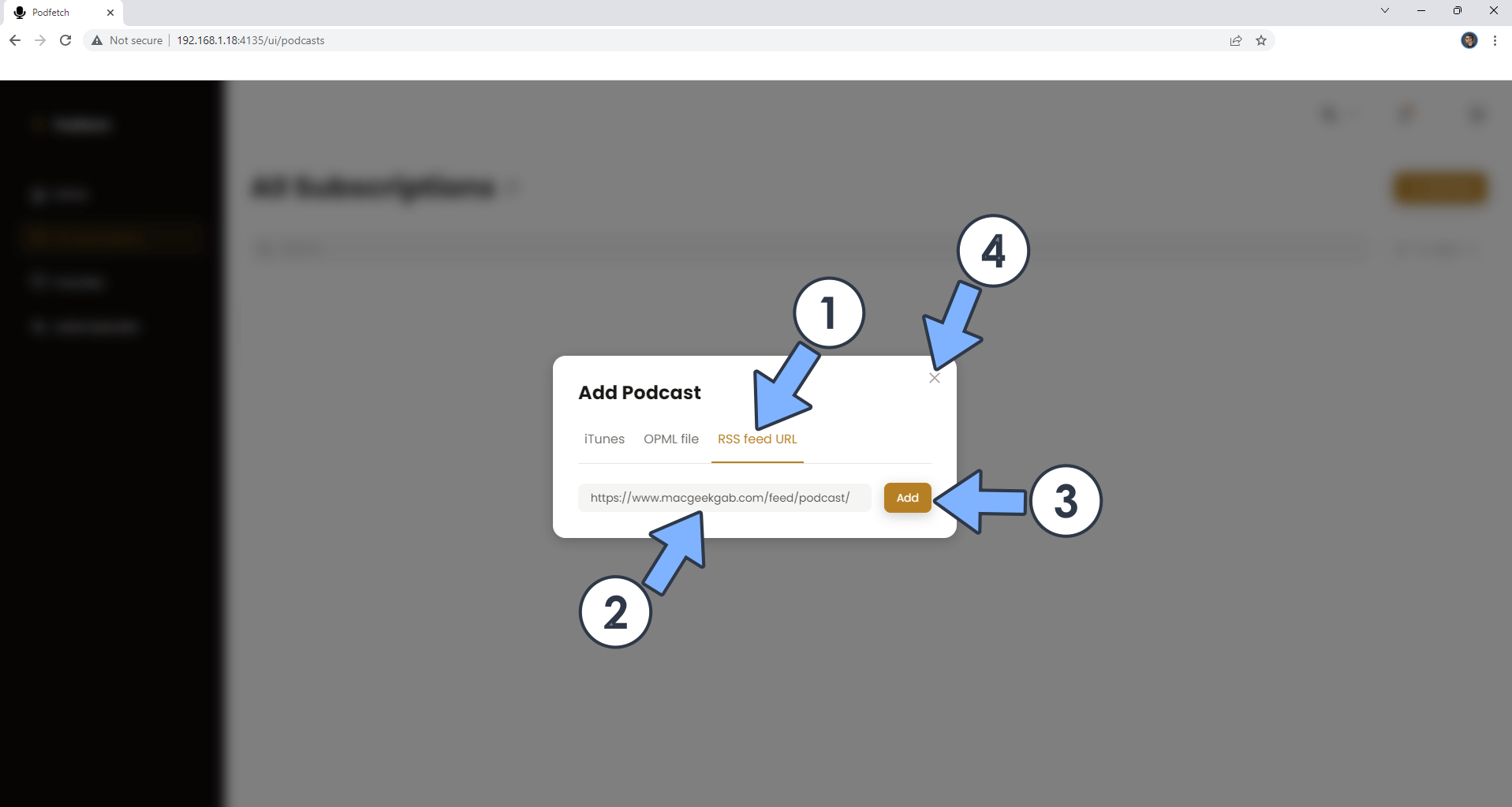
STEP 13
On the left sidebar click Home to see a list with all the latest episodes from your favorite podcasts. Click on a podcast to listen to it. Follow the instructions in the image below.
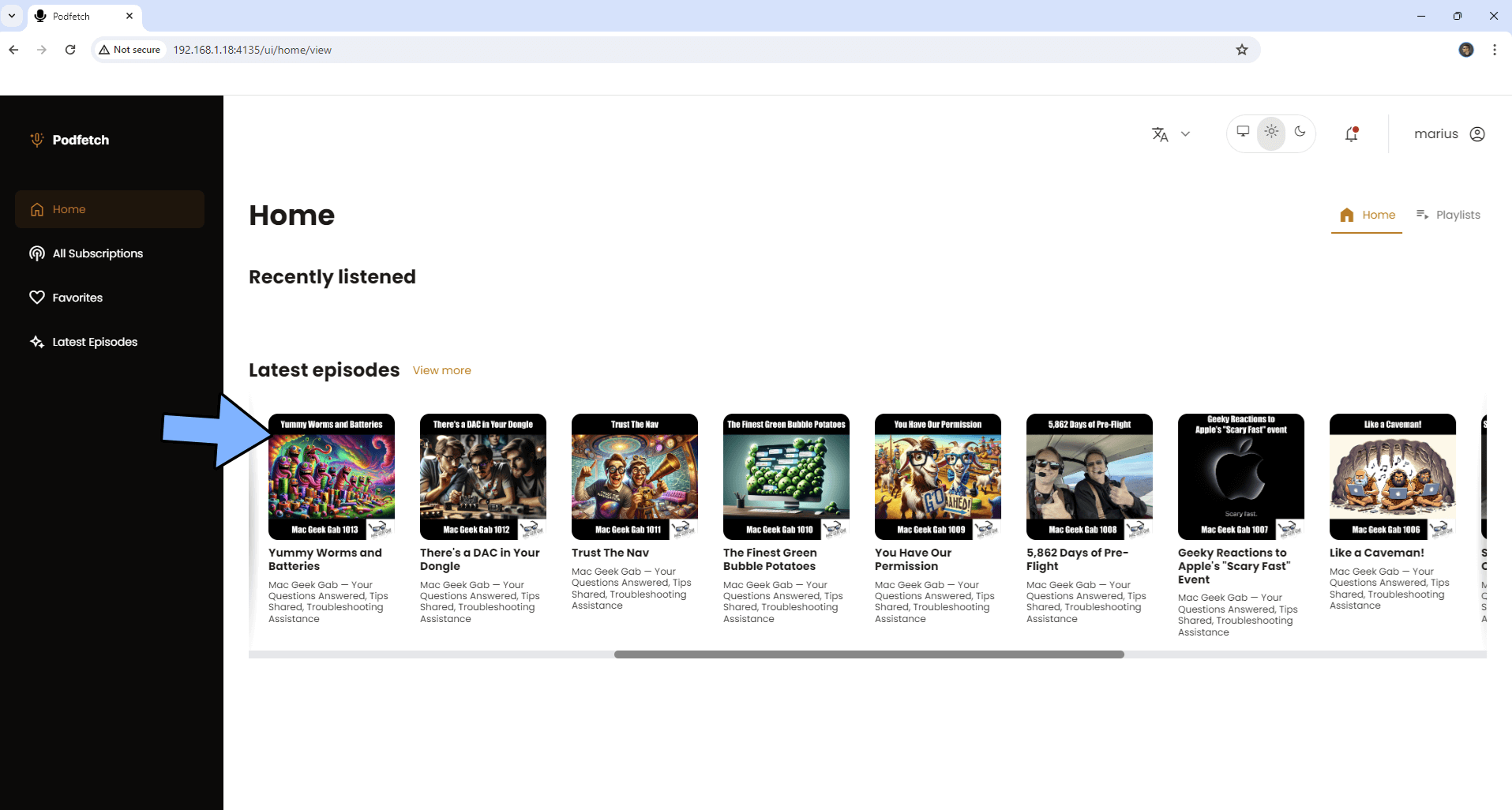
STEP 14
At the top right of the page, under the profile icon, you can also access the PodFetch Settings. Follow the instructions in the image below.
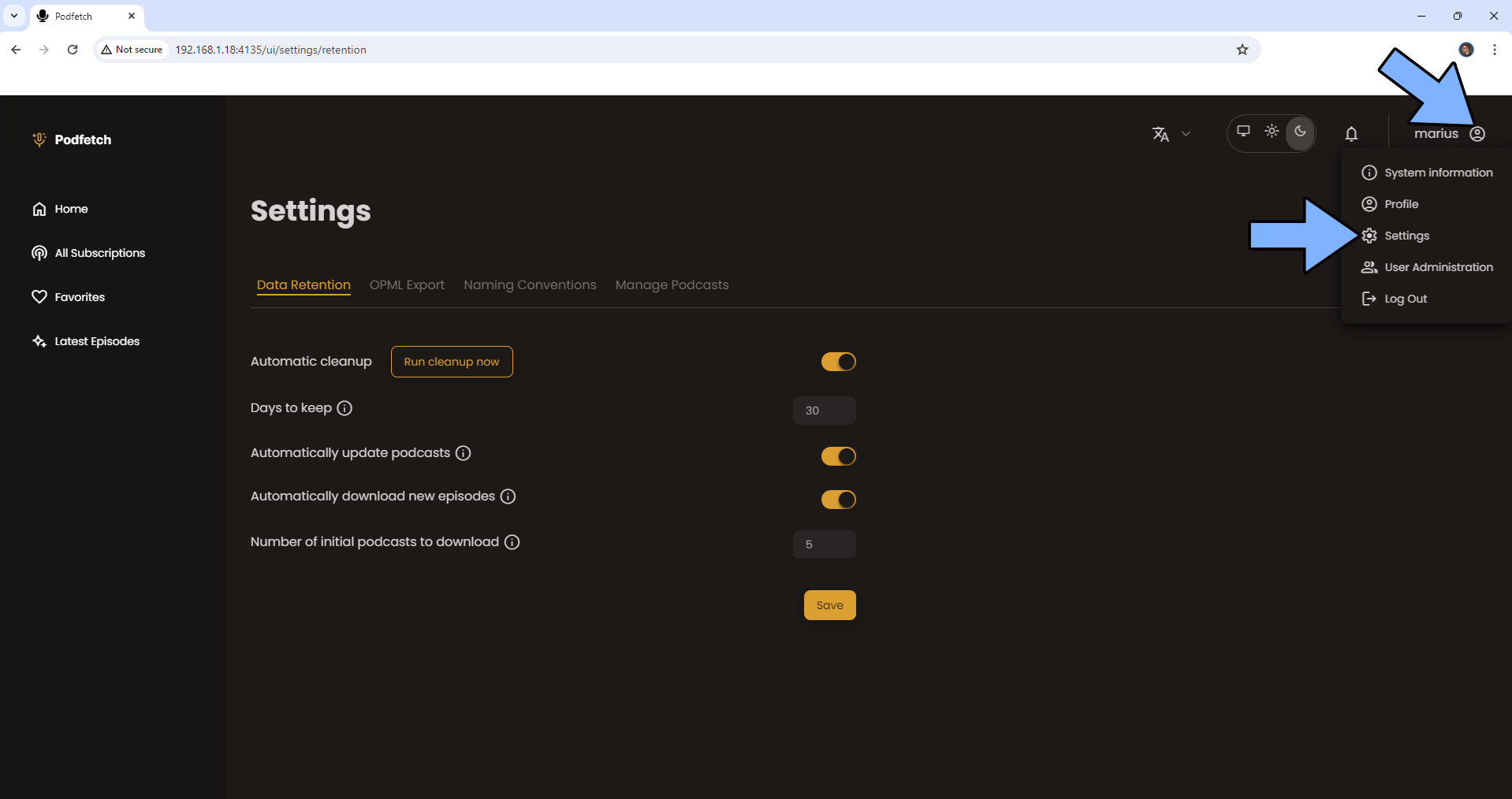
Enjoy PodFetch!
If you encounter issues by using this container, make sure to check out the Common Docker issues article.
Note: If you want to run the PodFetch container over HTTPS, check How to Run Docker Containers Over HTTPS. In order to make PodFetch work via HTTPS, it’s mandatory to activate WebSocket.
Note: Can I run Docker on my Synology NAS? See the supported models.
Note: How to Back Up Docker Containers on your Synology NAS.
Note: Find out how to update the PodFetch container with the latest image.
Note: How to Free Disk Space on Your NAS if You Run Docker.
Note: How to Schedule Start & Stop For Docker Containers.
Note: How to Activate Email Notifications.
Note: How to Add Access Control Profile on Your NAS.
Note: How to Change Docker Containers Restart Policy.
Note: How to Use Docker Containers With VPN.
Note: Convert Docker Run Into Docker Compose.
Note: How to Clean Docker.
Note: How to Clean Docker Automatically.
Note: Best Practices When Using Docker and DDNS.
Note: Some Docker Containers Need WebSocket.
Note: Find out the Best NAS Models For Docker.
Note: Activate Gmail SMTP For Docker Containers.
This post was updated on Thursday / January 9th, 2025 at 7:31 PM
